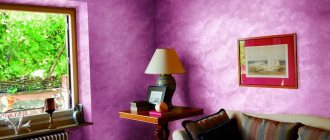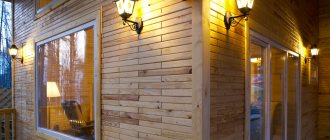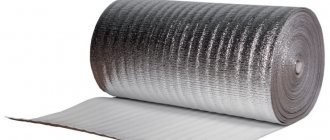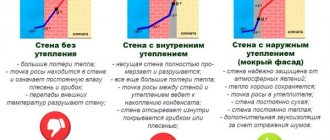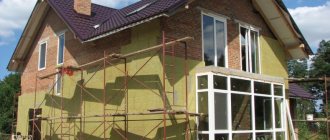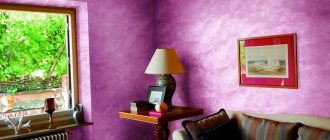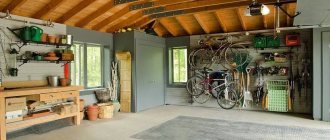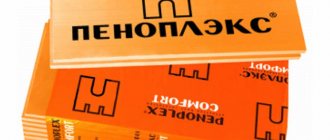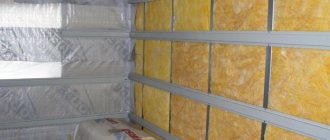Varnish for stoves and fireplaces made of brickwork must be of high quality, resistant to high temperatures, and it must create a stable coating on the surface of the structure. No matter how strange it may seem, in the modern world, heating a home with stoves is becoming increasingly popular. The use of fireplaces is not only beautiful and unusual from an aesthetic point of view, but also makes it possible to save money spent on utility bills during the cold period.
If the brickwork is done correctly, then there is no point in masking the structure under the facing coating. On the contrary, the beauty and authenticity of the structure should be emphasized by using the right coating. Below we will tell you in more detail about the best varnish to coat a brick oven and the method of applying it.
Lacquered red brick stove
What is liquid thermal insulation
Let me start with the fact that the development of this product has been carried out since the seventies in the military space industry of both our country and America.
A lightweight material was required, but with unique heat-insulating properties. Today, all advanced technologies have migrated into our everyday lives precisely from the military industry. And warm paint in this case is no exception. Now all the best is for peaceful purposes. Insulation paint is a polymer binder made of acrylic or latex. It also contains fillers made from the smallest ceramic, glass or polymer beads and various additives that determine different areas of application. In a word, this is a complex chemical compound, the development of which took a lot of time and money.
Protective coating practice
It’s worth saying right away that painting a fireplace, and even more so a large-scale stone stove, is a rather complex process, labor- and time-consuming, and also requires compliance with many subtleties and nuances when performing it. That is why most homeowners consider it right to entrust such work to real professionals and masters of the stove business.
If the desire to varnish the stove yourself does not disappear, but on the contrary, you want to directly participate in the process, you must, first of all, evaluate your strengths and abilities, and also decide what is more important to you - personal ambitions or a high-quality final result.
With your own hands, without any practical experience in applying varnish, it is best to carry out only the preparatory part of the required work. This will also save money on labor costs for the technician.
At the initial stage, it is necessary to take care to thoroughly clean the surface of the oven from dust and dirt. If you work with bare hands, then a construction brush with metal bristles (brush brush) will come to the rescue. It is better not to work dry, as the efficiency will be low; it is recommended to moisten the oven with soapy liquid. With its help, you will be able to remove not only superficial, but also deep dirt.
At the next stage, if you use a varnish that cannot be applied immediately without treating the surface of the fireplace with other building solutions, you need to carefully treat it with a primer or impregnation. If you skip this step, the level of adhesion will decrease, and material consumption, on the contrary, will increase.
Thermal insulating paint for walls: composition and scope of application
The composition of paints for thermal insulation is a mixture of:
- fillers;
- evacuated glass beads;
- water;
- acrylic-based dispersions;
- fiberglass;
- foam glass;
- perlite (in expensive types, perlite is replaced with ceramic microspheres).
Scope of material application:
- facades;
- pipes, including heating mains, water supply, gas;
- heating boilers;
- insulation of tanks and industrial equipment;
- walls in the apartment;
- basements.
The paint is applied in a relatively thick layer (4 mm), and therefore its use can replace several millimeters of external insulation or serve as an additional heat preservation system. The condition for the thermal insulation function is an even layer around the perimeter, and therefore it is better to use a spray gun to evenly distribute the viscous consistency
Surface preparation
Before applying paint, it is necessary to properly prepare the surface. On a dirty, uneven base, the coating will not last long, and therefore all efforts and financial costs will be in vain.
Dust, dirt and oily formations are carefully removed from the surface. All cracks and cracks are sealed. They also get rid of uneven surfaces by using a metal brush, grinder or sandblaster.
Note! In the case of concrete, the surface should be cleaned of the so-called “cement laitance” - dust, which greatly impairs the adhesive qualities of the coating.
When the surface is cleaned and leveled mechanically, a primer is applied. VL-02 or VL-023 are most often used as priming compositions.
Classification of thermal compositions
The classification of the dye is carried out in two directions.
Two types according to manufacturing method:
- water CM - covers the pipes of the heating system, does not contain toxins;
- Acrylic-based CM is universal and interacts with many materials.
Three types depending on the place of application:
- universal CM - walls inside rooms and on the street side, ceiling, floor are covered;
- energy-saving façade paint – the moisture resistance indicator is high and allows the material to be used for painting the surface outside;
- heat-insulating paint for pipes - protects water and gas pipelines, pipes of ventilation and air conditioning systems.
Criterias of choice
When purchasing heat-insulating paint, it is recommended to pay attention to the following factors:
- Heat resistance. This indicator is especially important if the pipeline is to be painted.
- When choosing paint for exterior or interior use, take into account the operating conditions of the surface. For example, to insulate a facade, you should choose a paint with maximum moisture resistance and high permeability. For indoor coatings, environmental safety is considered the most important characteristic.
- Consumption per 1 m2.
Composition of thermal insulation paints
Types of thermal insulation paints differ in composition. Differences in composition exist between similar dyes from different manufacturers. But despite all the differences, there are 4 elements that make up most thermal paints:
- The basis . Other names are base or filler. This is a connecting link that evenly distributes the remaining components over the insulated surface. In thermal paint, two types of base are used - water-acrylic and acrylic dispersions. Because of this filler, applying the composition has become less labor-intensive, and the paint has high adhesion to various types of surfaces, as well as an increased speed of drying and polymerization.
- Modifiers . Various impurities that determine the temperature and strength characteristics of the paint. These are the preferred coating materials, making it possible to work indoors, as well as at sub-zero temperatures. For example, rubber, latex or silicone are used to increase the elasticity of the composition.
- Ceramic granules . Small ceramic balls with a technical vacuum or low-inert gas inside. Due to their spherical shape, the balls are evenly distributed in the thermal insulation layer, and due to vacuum or gases they reduce the level of thermal conductivity.
- Pigments . Typically, the compositions are supplied only in white or gray colors, but manufacturers meet customers halfway and add special pigments to achieve the desired color of the insulating paint.
Thermal paint application methods
Heat-insulating paint can be applied using brushes or rollers. You can use a sprayer that transfers the composition using compressed air. The sprayer uses paint economically and evenly distributes paint, allows you to paint hard-to-reach places, therefore it is the preferred method of painting. But it’s worth buying it if you plan to carry out large-scale work. Small areas can be insulated with a brush or roller.
Thermal insulation should only be applied to a dry, clean surface, free of oil or other greasy stains. In some cases, for example, to reduce the consumption of heat-insulating paint, a primer is applied to the surface before painting, which levels the area and fills the pores.
Apply heat-insulating paint in several layers of about 0.5 mm, depending on the required thickness of the insulation. The average thickness is 1-2 mm, the greatest - up to 4 mm. Interlayer drying lasts up to 1 hour.
A day after applying the last layer, the surface can be covered with primer and any topcoat can be applied.
Functional Features
The quality of thermal protection of thermal paint directly depends on the applied layer and the number of stains. However, it is also not recommended to apply an excessively thick layer; the best option is 2-4 paintings, no more than 6 mm thick. The number of layers depends on the type of heat-insulating liquid material, as well as on the type of surface to be applied. The service life is 12-40 years, and the temperature characteristics are -70°C, +260°C.
Main advantages
The main advantage of liquid insulation for work inside buildings is thermal insulation without reducing space. It is important to note the material’s resistance to temperature changes, which occurs in winter during the heating season: it’s minus outside and plus inside, condensation collects, which forms a favorable environment for the development of fungus. Additional benefits:
- environmental friendliness - the paint does not emit harmful toxic compounds at high temperatures and does not react with other building materials;
- saving on heat bills due to thermal insulation;
- strengthening treated surfaces.
Calculation of the amount of paint
The amount of paint used depends on many variables, including:
- type of base coating (concrete, expanded clay concrete, foam concrete, wood, metal, brick);
- smooth or uneven surface;
- presence or absence of pores;
- surface area;
- thickness of the paint layer;
- in the case of pipes - the diameter of the pipeline;
- weather;
- method of applying paint (brush, roller or spray).
The excess of paint consumption above the average is largely determined by the type of surface. In particular, for concrete and wood the excess is 5-10%, for metal - 3-6%. The greatest overspending is observed when painting embossed, porous or rough surfaces - from 15 to 35%.
Note! In good, calm weather conditions, paint consumption is reduced by 2-3%.
On average, paint consumption is 1 liter per square meter based on a millimeter layer. However, for some types of materials thicker layers are recommended. For example, for concrete - 1.5, brick or foam concrete - 2.5, wood - 2 mm.
Thermal insulation paint - working with the material
Separately, it is worth noting the ease of working with the material. When organizing insulation of the facade of a house using polystyrene foam, it is necessary to perform a whole range of operations: fasten the slabs, install reinforcing mesh, plaster the walls and paint them. Insulating paint eliminates this need. It is enough just to apply one or two layers of material to the surface to be treated using a brush or roller, if the area is not too large. When processing building facades, you can use a spray gun for greater convenience of the operation. The simplicity of the insulation process using thermal insulation paint eliminates the need to involve specialists and allows you to do the work yourself. Heat-insulating paint allows you to save a lot of time and money. It lays on any surface in a perfectly even layer, even if the base is deformed. The hardening process of the insulation paint takes 24 hours. After this time, the thermal paint turns into an elastic and very durable film. It is this that provides thermal insulation of a room or a separate surface.
The area of use of insulating paint is constantly expanding. Thermal paint Akterm can be used as a heat insulator for coating water supply pipelines, water heating equipment in boiler houses or oil and gas storage facilities. Application of the material is possible on a metal surface of any shape. Thus, insulating paint becomes an ideal option for providing thermal insulation of pipeline shut-off valves. At the same time, the finished coating can be used in a wide temperature range: from -60 to +230 degrees Celsius, maintaining its performance qualities. The service life of the material reaches 15 years or more.
If we talk about the insulation of premises, here thermal insulating paint finds its application as the main and additional thermal insulation. This material can be applied to the interior walls of the house and other elements of its structure. Ultra-thin thermal insulation makes it possible to significantly reduce the cost of maintaining optimal temperature inside rooms, while at the same time destroying mold and condensation on surfaces. Insulation paint can be applied to brick, concrete, drywall or wood. At the same time, you can glue wallpaper on top of the liquid thermal insulation or carry out any other decorative work.
Fighting condensation with heat paint
Liquid thermal insulation allows you to avoid the manufacture of complex structures necessary for attaching a thermal insulation layer near the roofs of hangars and residential buildings. Painting pipelines of engineering systems is much cheaper than protecting pipelines with polystyrene foam shells, winding with basalt wool, and then waterproofing the insulation.
Condensation control is available to a home craftsman with minimal painting skills. Liquid thermal insulation is sold in convenient buckets and jars, is completely ready for use, and has instructions for use. The weight of the roof practically does not increase when applying a millimeter layer, while the comfort of using the premises increases many times over.
Varieties and their features
Thermal insulation paints are made on a water basis and with the addition of acrylates. Each type of product has its own advantages and disadvantages.
Water based
Water-based thermal insulation paint dries to form a durable and elastic layer. This paintwork is intended for work indoors and outdoors, as well as for painting heating mains.
What is the weight of paint contained in 1 liter and its density, how to convert from kg to l
Pros and cons: does not require ideal conditions when painting; can be used at any temperature; dries, creates an elastic and durable coating; less durable than an acrylate composition; high price, high consumption.
Acrylate
This heat-insulating paint, when drying on the wall, resembles a layer of plastic or rubber. The coating can serve as a base for painting. Mainly used for outdoor work.
Pros and cons: versatility (for any type of surface); when dry, it creates a very durable coating; requires careful preparation of the base; high price.
Metal paints
Let’s immediately make a reservation that heat-resistant paint for metal stoves is not used for painting brick. But their classification is exactly the same. And they are made on the basis of the above compositions. True, there are other varieties:
- epoxy , which can be used for painting metal products heated to +200 °C;
- single-component ethyl silicate and epoxy ester , withstand temperatures up to +400 °C;
- silicone one-component – withstands up to +650 °C;
- compositions to which liquid glass or composite materials are added , they can withstand temperatures up to +1000 °C.
Heat-resistant silicone paint, black Source gdematerial.ru
Basic recommendations for selection
Thermal paints are available on the market for various surfaces and conditions of use. Therefore, when purchasing, you need to consider the following parameters:
- For what purposes is such thermal insulation needed ? This includes what material the surface that needs insulation is made of (brick, wood, metal, concrete) and the area of insulation. The main required characteristics of thermal paint: fire resistance, heat resistance, high vapor permeability, anti-corrosion properties. But you need to consider where the insulation will be done. If indoors, it is important to select appropriate formulations without harmful components.
- What areas are supposed to be painted and in what way . If you use a brush or roller for painting, you need to understand that they consume more material than a spray gun. In addition, they lay thermal insulation in a less uniform layer, but are cheaper and are quite suitable for small areas.
- Select color . In most cases, the color of the thermal paint is white or gray, but some manufacturers offer ready-made paints in different colors. And sometimes colors are added at the client’s request without losing the original characteristics.
Another aspect worth paying attention to is the choice of original. If you take products in branded stores, then the risk of taking a useless counterfeit is small, but on the market you need to carefully study the documentation and packaging. If something suddenly alarms you, then you should refuse the purchase. Sellers in such places may not even know that they are selling non-original paints. Foreign expensive compounds are often counterfeited, but there are also counterfeits among domestic products.
For interior work
To paint objects and walls indoors, you need insulating paint that does not contain toxic substances. The product must be labeled “for interior use.”
This paintwork is applied in the thinnest layer and does not take away extra meters from the room.
For outdoor use
To insulate the facade and protect heating mains, durable heat-saving paint is needed. The composition must have high levels of water resistance, frost resistance and heat resistance. You can work with this paintwork in any weather conditions (except rain).
How to choose?
When choosing a thermal insulation material, it is important to consider the location of the painting work (indoors or outdoors) as well as the type of surface being treated. Before purchasing thermal paint, it is also advisable to familiarize yourself with the list of popular manufacturers and study reviews of their products.
Some recommendations for selection:
- for exterior work, you should select paint with high levels of water resistance and heat resistance;
- for indoor work, you need to purchase paint that does not contain toxic substances;
- the mixture for painting gas and water pipes must have the highest heat resistance.
It is worth remembering that when painting, quite a lot of heat-insulating composition is consumed. Before purchasing a suitable liquid insulation, it is important to calculate in advance the required amount of mixture.
When calculating, the following factors must be taken into account:
- Surface area to be painted.
- The type of material that will be coated with paint and varnish. To cover a wooden, brick or concrete surface, paint overconsumption can range from five to ten percent. Painting the metal may require an additional three to six percent of the mixture.
- Presence of defects on the surface. If there are small cracks or irregularities, it is worth considering that painting such areas will require an additional amount of liquid heat insulator. Overconsumption of the mixture can reach forty percent.
- The number and thickness of paint layers you plan to apply to the surface. Recommended coating thickness for different materials:
- For concrete - one and a half millimeters.
- For wood - two millimeters.
- For metal, brick, cellular concrete and expanded clay concrete - two and a half millimeters.
To calculate the approximate amount of paint, you need to multiply the surface area, the consumption rate (liter/sq. m) and the number of intended layers.
Famous brands
You can purchase heat paint at any hardware store. Well-known brands on sale:
| Brand | Types of CM | Performance indicators | Area of use | Price |
| Korund, Russia | Classic | Container – can 3, 10 kg or 20 l. For indoor and outdoor work, tolerates -60°C to +250°C. | Cooling of contents in heating pipes, steam pipelines; reduction of heat loss – facades, external walls; heat preservation - walls inside the house, train stations, airports; mold protection – bathroom, ceiling | 10 l – 5,700 rub. |
| Anticorrosive | Even metal with rust is covered. Its traces are removed with a brush and can be painted. | 10 l – 6,500 rub. | ||
| Winter | You can work at -10°C. Insulation outdoors in winter is allowed. | 10 l – 6300 rub. | ||
| Facade | A minimum 1 mm layer with high vapor permeability and water resistance is applied to the facade. | 10 l – 6,000 rub. | ||
| Environmentally friendly Astratek, Russia | Station wagon | Quality is preserved after 5 freezing cycles. Density is regulated by water. Tolerates -60°C to +260°C. | For thermal insulation of walls on the street side inside housing construction. | 10 l – 107 dollars |
| Metal | KM's base color is grey. Permissible operating mode -60°C to +200°C. | Protection against metal corrosion; it covers the roof. | 10 l – 6,700 rub. | |
| Facade | The base color is white, can be tinted. Apply with a spatula or spray. The material is vapor permeable and water-repellent. | Heat loss insulation layer on the façade | 10 l – 7,050 rub. | |
| Liquid ceramic coating – KM Bronya | Classic | Prevention of corrosion, condensation, and UV rays from the sun. The coating increases the service life of the object. | Stopping heat loss on heating system and water supply pipes, chimneys. | 10 l – 4,200 rub. |
| Anticorrosive | A composition with anti-corrosion properties adheres to rust. | Heat insulation on the surface of the metal base. | 10 – 5,200 rub. | |
| Winter | Components: acrylic polymers and tiny foam glass granules, the layer is not afraid of frost. The material can be worked at -35°C. | 10 l – 3,900 rub. | ||
| Facade | A covering layer with a high vapor permeability value is applied at 1 mm. | The facade of the house is saved from microorganisms and fungus. | 10 l – 4,200 rub. |
Work process
How to apply varnish correctly, what rules to follow?
- First of all, prepare the necessary tool of your choice:
- flat brushes;
- sprayer with a nozzle size of 1.8 - 2.5 millimeters; the distance from the sprayer to the oven surface should be at least 20-30 cm;
- roller
- Then prepare the surface for painting:
- fill cracks and chips;
- remove dirt and dust from the oven;
- dry the surface;
- degrease it using solvent.
- Apply varnish. As a rule, it is recommended to apply three coats to a brick surface. Because thanks to its structure, brick is able to absorb varnish. The first is applied directly on top of the stove brick; it will fill uneven areas. The second one enhances the protective properties and smoothes the surface. The third one improves the aesthetic appearance of the stove. If you apply two or more layers of varnish, the surface of the stove will become glossy-matte.
Areas of use
The material itself is suitable for painting in the following areas:
- insulation of equipment used in industry;
- processing of various containers;
- agricultural production;
- insulation of basements;
- protection of heat supply systems;
- vehicle processing;
- thermal insulation of housing, inside and outside;
- work with air conditioning systems, steam and gas pipelines, utilities;
- protection of pipes from freezing processes (heat-insulating paints are especially needed here);
- façade insulation of external walls.
Such protective paints for metal and other materials will find a place in almost any area of the national economy. They provide excellent competition to traditional insulation methods.
What is it used for?
The name itself - heat-insulating paint - speaks about the purpose of the material. The coating protects surfaces from heat loss, forming a barrier from direct contact with the external environment.
Expert opinion
Torsunov Pavel Maksimovich
The specificity of the material is such that one cannot expect a thermos effect from it. However, in most cases it is quite enough to reduce heat loss to an acceptable minimum.
In addition, the method of applying the material allows you to insulate bases of complex shapes - curved, embossed, with a lot of small details.
At the same time, heat-insulating paint practically does not change the dimensions of the base, which makes it possible to insulate structures and sections of utility networks located in limited spaces - in shafts, boxes, in crowded and cramped conditions.
Considering that 1 mm of thermal insulation paint is equivalent in performance to 50 mm of mineral wool (or other similar insulation), the use of the material will only expand and become more common.
Paint Performance Assessment
Experts' assessments regarding thermal insulation paint are ambiguous.
On the one hand, long-standing disputes have not yet completely subsided, when, under the guise of a “miracle remedy,” compounds were advertised and sold, the quality of which left much to be desired. And there are still supporters of this point of view who believe that this is a hoax and technically impossible.
On the other hand, technology is developing and new components are constantly being developed to improve the performance of thermal insulation paints. Moreover, both in terms of thermal conductivity and in relation to other characteristics. Of course, there is a possibility that the figures in advertising are slightly exaggerated.
Considering both opinions, we can conclude that the truth is somewhere in between. The characteristics of thermal insulation paint are not unique, but they may well help out in certain situations.
How does modern insulation paint work?
Due to its unique properties, liquid insulation already begins to work at a thickness of 1 mm. This breaks the whole stereotype in our usual insulation. After all, we are used to the more the better. In this case, no more is needed. 1 millimeter of heat-insulating paint is approximately equal in thermal insulation to 5 cm of mineral wool insulation. Agree, this is a worthy indicator.
Once upon a time, while studying at school, we were taught that vacuum is the best insulator. Sound, heat, and electricity do not travel through it. This explains the phenomenal effect of using heat paint. Since there is a vacuum in the microscopic ceramic balls, the result is a kind of mini-thermos, of which there are millions, and maybe billions.
Due to such a complex molecular structure, thermal energy is reflected. All three types of heat transfer, namely convection, conduction and radiation, are almost completely reflected. The protected surface always remains pleasantly warm.
Distinctive characteristics and properties of thermal insulation paint
Ease of application is a big plus. Thermal insulating paint can be applied in a variety of ways, including roller or spray. When the area to be treated is large, a spray gun will be more useful.
Akterm is a liquid thermal insulation similar to paint. This is a practical consistency suitable for various types of surfaces. With prolonged exposure to air (about 24 hours), the mixture polymerizes. So it becomes a thermal barrier. In summer, thermal paint reflects 95% of the sun's rays. And in the winter months, on the contrary, they return (this volume will be about 70%). AKTERM does not require special conditions for application. So, a temperature of at least 20 degrees C is sufficient. And during operation, the product will withstand up to -60°C. And if the surface with paint becomes dirty, it can be easily washed, and it will again become not only functional, but also aesthetic.
Today, energy-saving technologies are becoming increasingly relevant as a construction issue. The modern market offers consumers innovative developments in this area, embodied in high-quality universal materials. They are designed to provide maximum protection of the home from adverse natural factors and proper thermal insulation of the premises.
Thermal insulating paint is a new product on the building materials market. Its purpose is to reduce heat loss in a building, in particular in a house. Having a liquid consistency, the material is easily applied to any type of surface, even deformed. The material is completely safe for human health and the environment, being a composite thermal paint, which includes a polymer matrix and a filler - hollow microspheres.
The range of properties of heat-insulating paint is very wide:
- Prevents cold from penetrating into the room
- Prevents corrosion on metal surfaces
- Excellent heat retention
- Prevents moisture from entering, eliminates mold
- Eliminates condensation
- Saves electrical energy
The thinnest layer of insulating paint can completely replace the traditional thermal insulation system of a house. Liquid insulation has a very reasonable cost and efficiency, which is also one of the factors in favor of its choice.
Do-it-yourself thermal paint, can it be done and how?
You can make heat-resistant paint yourself. The best option would be to prepare it from liquid glass and aluminum powder. The main thing is to understand that after the first fire, strong smoke may appear; the shelf life of such a coating is up to five years.
You can also use heat-resistant varnish; aluminum powder is added to it to obtain the desired effect. This option can withstand up to 350 degrees, and receives an anti-corrosion coating. Making paints is not difficult, the main thing is to get the necessary ingredients.
You can use heat-resistant varnish; aluminum powder is added to it to obtain the desired effect.
Tips and tricks
- When choosing a suitable composition, you must carefully study its purpose and technical characteristics . For example, mixtures intended for indoor use outside buildings will not provide the proper level of protection against heat loss and the negative effects of the external environment.
- Before applying the composition to the surface, the base must be cleaned of dirt and degreased . It is most convenient to apply the mixture to large areas using a sprayer. Hard-to-reach places must be painted with a paint brush.
- Each modification of the paint and varnish material may have its own operating temperature range Water-based mixtures can usually be applied at an air temperature of at least 7 degrees. Some acrylic compositions for facade work can be painted at temperatures below -20 degrees.
- Insulating paint and varnish material is usually applied in no more than three layers , and the thickness of one layer must be at least 0.4 millimeters. The mixture is applied quite easily, leaving no streaks on the surface. In cases where it is necessary to paint concrete or brick bases, it is recommended to first treat them with a deep-penetrating primer mixture.
Requirements for paints
Primarily, these compositions were made to decorate heating surfaces. But at the same time, the heating devices and units themselves do not lose their technical and operational characteristics. Therefore, there are special requirements for paint and varnish products of this type. Namely:
- High security . That is, during the heating process, the painted surface should not release substances harmful to humans into the air.
- Thermal conductivity . The paint layer applied to the stove or fireplace should not interfere with the release of heat into the room. That is, the heat exchange between the stove and the air inside the rooms must be sufficient.
- High elasticity of the material . It would be easier to say this: the paint applied to the surface of the stoves should not crack during operation. Especially with temperature changes.
- The material should easily withstand the negative effects of household chemicals . That is, so that painted stoves and fireplaces can be easily washed and cleaned using various detergents. In this case, the surfaces must withstand repeated cleaning.
- Covering power . This indicator should guarantee even application of paint to the surface. It is optimal if there are no more than three layers.
Good hiding power of heat-resistant paints Source orchardo.ru
See also: Catalog of companies that specialize in paints and varnishes and related work
Advantages and disadvantages
Liquid heat-reflecting composition has significant advantages over other insulating materials. Its advantages include the following qualities:
- Use significantly reduces heating costs.
- The paint layer hides cracks and irregularities well.
- The composition adheres perfectly to the surface and paints even hard-to-reach places.
- It has good protective properties. Metal protects against rust, and concrete protects against destruction.
- The protective layer is highly resistant to temperature and mechanical influences, as well as ultraviolet radiation.
- The material is environmentally friendly and does not cause allergies.
- Has a long service life.
- Prevents the appearance of fungi and mold, as well as condensation on the surface.
- The composition is easy to use. Applying a protective layer to the surface does not require any special skill. Any person can handle the job.
In addition to its advantages, thermal insulation paint has some disadvantages. The most significant of them include:
- Large consumption of material to form a high-quality insulating layer.
- High price.
- Low fire resistance.
Features of painting a metal stove
To get maximum efficiency from using high temperature paint, the painting process should be carried out according to the rules. First of all, study the instructions on the package. And then the metal stove is prepared, and only then proceed to painting.
To get maximum efficiency from using high temperature paint, the painting process should be carried out according to the rules.
Types of liquid insulation Bronya
VIRC constantly conducts scientific research work, which allows the company to improve materials manufacturing technologies, as well as produce new series of coatings.
Currently, two main types of thermal insulation liquid materials can be distinguished:
Types of materials
Next, we will take a closer look at the purpose and features of each of these series.
Dye
Bronya paint is a universal ultra-thin thermal insulation. Its main features include weather resistance, temperature resistance and vapor permeability. In addition, this coating, like other types of liquid thermal insulation from this manufacturer, is environmentally friendly.
Application area. Thermal insulation coating can be used to insulate the following structures:
- Facades;
- Internal walls;
- Roofs;
- Pipelines;
Paint can be used for thermal insulation of pipelines
- Window slopes;
- All kinds of containers, etc.
Thermal insulating paint can be used to insulate facades
This coating can be applied to a variety of surfaces, such as:
- Metal;
- Concrete;
- Wood, etc.
Thermal insulation adheres well to a wooden surface
Thermal insulation paint can be applied with a roller or brush
Characteristics:
| Options | Magnitude |
| Service life, years | More than 15 |
| Permissible temperature, °C | -60 to +200 |
| Thermal conductivity, W/m °С | 0,0012 |
In the photo Bronya Classic is a basic modification of heat-insulating paints
Varieties. There are several modifications of thermal insulation paint from VIRC on sale:
Classic. Basic modification, which includes all the above characteristics;
The Standard series has a maximum temperature limit of up to 140 degrees
Standard. Cheaper analogue of the Classic. It differs only in its limited maximum temperature - up to 140 ° C;
In the production of Universal series paint, import-substituting technologies are used, which makes it cheaper
Station wagon. Another budget heat-insulating paint. The characteristics are similar to the Classic and Standard series; Cheaper costs are achieved through the introduction of import-substituting technologies;
Anticor paint can be applied to rusty metal surfaces
Anticorrosive The material is intended for metal surfaces covered with corrosion. The coating not only transforms old rust, but also prevents the appearance of new ones. Otherwise, the characteristics are the same as for other paint modifications;
Winter series paint can be applied at temperatures down to -35 degrees
Winter. The peculiarity of this coating is that it can be applied at temperatures down to -35 degrees.
Price:
| Name | Price for 1l |
| Classic | 450 |
| Standard | 360 |
| Station wagon | 320 |
| Anticorrosive | 460 |
Insulating putty can be applied in a layer of 1 mm
Manufacturers
In order not to make a mistake in choosing a high-quality thermal insulation coating, it is better to purchase products from well-known and trusted manufacturers. Among Russian manufacturers of thermal insulation paints, four leading ones can be identified:
One of the most popular manufacturers of thermal insulation mixtures is.
Liquid heat insulators from this company can be used to treat the following surfaces:
- metal containers;
- rooms with high humidity levels;
- boiler rooms;
- facade of buildings;
- surfaces inside residential and administrative buildings;
- chimneys;
- motor transport, passenger aircraft, railway cars;
- pipelines.
produces several types of paints and varnishes, depending on their scope of application. The following modifications of Korund products are produced:
- "Classic". A universal coloring composition that is suitable for external and internal work. Widely used in building construction.
- "Facade". This heat insulator is designed for treating concrete walls. Painting can be done both outside and inside the room. The material has a high level of waterproofness and heat permeability. The coating protects the walls from overheating in the warm season and from freezing in the cold season.
- "Lotus". It has the same qualities as the “Facade” modification. This material is intended for application to the surface in the form of a final layer.
- "Winter". A distinctive feature of this modification is that the dyeing procedure can be performed at sub-zero temperatures. You can work with such material at temperatures not lower than -10 degrees.
- "Anticor". Used for painting metal surfaces. This paint and varnish material protects the metal from atmospheric influences and prevents corrosion.
"Termalcom"
produces a line of heat-insulating paints "Astratek". The paint and varnish coating is made on the basis of polymers. offers products with high performance characteristics at reasonable prices.
Liquid thermal insulation "Astratek" is widely used in the construction, industry and housing and communal services sectors. There are six modifications of this company’s thermal paint:
- "Astratek Universal". Suitable for painting all types of surfaces. It has a high level of vapor permeability, which helps prevent the appearance and spread of mold on the surface.
- "Astratek Metal". Used for painting metal structures and devices that are operated in unfavorable conditions of high humidity. Such a coating will increase the service life of products made of ferrous and non-ferrous metals, prevent corrosion and eliminate the formation of condensation.
- "Astratek façade". It is used for thermal insulation of building facades.
- "Astratek NG". It is a special fire-resistant modification of the material.
- "Astratek Universal BC". An all-season coating that is temperature and weather resistant.
- "Astratek decor-acoustic" It is used as additional thermal insulation of walls, and also significantly improves the acoustics in the room.
GC VIRTs "Bronya"
The products are widely used in various fields of construction and industry. The manufacturer offers the best conditions on the thermal paint market in terms of price/quality ratio.
Thermal insulating ceramic paint "Bronya" was previously used mainly for painting gas networks and water supply systems. However, the company regularly expands its line of thermal insulators with new modifications.
Thermal paints are divided into three groups:
- basic modifications;
- budget modifications;
- special modifications.
"Akterm"
is one of the leading manufacturers of liquid thermal insulation. The company independently develops a unique manufacturing technology for its products. In the production of heat-retaining materials, only high-quality raw materials are used.
Liquid thermal insulation currently has fifteen different modifications, differing in composition and properties.
The main functions performed by Akterm thermal insulation coatings are as follows:
- preventing the formation of condensation;
- anti-corrosion protection;
- water protection;
- thermal insulation;
- fire protection
Recommendations for application:
- Before using ultra-thin insulation, it is necessary to prepare the surface to be treated: remove rust, clean from dust and grease, and prime if necessary. It is advisable to apply the paint and varnish composition at a humidity of no more than eighty percent and a temperature of at least seven degrees Celsius.
- When carrying out external painting work, it is better to choose calm weather. Due to wind, paint consumption can increase by up to five percent. The following tools can be used to apply the coloring composition:
- roller;
- spray gun;
- paint brush.
- It will be most convenient to apply the mixture using a spray gun. If the ultra-thin insulating mixture is too thick in consistency, it can be diluted with water. Also, do not forget about using a respirator to protect your respiratory organs.
The most common stove varnish options
KO-85 is perhaps the most popular heat-resistant varnish based on organic silicon on the Russian market. Used for varnishing brick, stone, and metal coatings. The varnish has good adhesive properties to the treated surfaces, as well as excellent anti-corrosion properties. KO-85 makes the surface fresher on its own, but can also be used in conjunction with enamel. The thermal stability of the varnish ranges from minus 40 to plus 300 degrees.
Another brand of varnish - KO-815 - is also based on an organosilicon compound. It differs from KO-85 in even greater resistance to low temperatures and better resistance to moisture.
Varnish KO-815 copes well with high temperatures and moisture
We recommend: What is tsaponlak and what is it for?
There are many other formulations from different manufacturers. Despite all the similarities, they may differ in some application features. Therefore, before buying paints and varnishes, you should carefully read the instructions from the manufacturer.
Main characteristics
Heat-resistant paints are produced using special technologies and components that are not subject to the negative effects of high temperatures. They are necessary for covering stoves, barbecues, and barbecues. You can’t do without them in a bathhouse or in a house with a fireplace. They are used not only to create an attractive spring look, but also to protect the treated surface.
Manufacturers produce heat-resistant finishing materials for brick and metal. They differ in the degree of adhesion, consistency, and composition.
Heat-resistant paint for metal products protects against corrosion and stops rotting processes. The coating for brick surfaces preserves their integrity, preventing brittleness, crumbling and thereby significantly extending their service life.
Among the advantages of heat-resistant paints are:
- elasticity - when the surface is heated and its slight deformations, the coating does not crack or chip;
- choice of color - although white, gray and black coatings are considered classic, you can find any desired shade on sale. Some manufacturers provide the opportunity to independently color the finishing material;
- durability – the service life of the treated coating is up to 5-12 years;
- color fastness;
- protection from the negative influence of external factors - the paint also protects the coating from moisture and sunlight;
- cost-effectiveness and ease of use.
High-quality heat-resistant paint should have a protection rating of 400 degrees. With lower values, it should not be applied to areas where there is a risk of exposure to open fire. But it can be used to cover brick kilns, since the outside of them usually does not heat up to that level.
Heat-resistant metal paint used to cover barbecues must be fire-resistant, with a protection degree of 650 degrees.
Heat-resistant fireplace varnish
Increasingly, owners of private households are trying to acquire fireplaces, which are rightly considered one of the main attributes of comfort in the house.
heat resistant fireplace varnish
They are installed not only for heating and creating a comfortable indoor microclimate, but also as a decorative element of the interior. Taking this into account, the appearance of such a structure must comply with the design style and existing design rules. Therefore, very often additional paint and varnish materials are used for brickwork, which help improve its appearance.
Lacquered fireplace
Currently, the industry produces several types of special heat-resistant varnishes for fireplaces, which will make this functional and decorative element of the interior both more aesthetically pleasing and more durable. They are mainly made on an organosilicon basis. Since the varnish is colorless, its shades can, if desired, be changed by adding a special water-based color to them.
To know in detail what the composition of the varnish is, and whether it is possible to prepare it yourself, you need to understand the characteristics.
Areas of use
Heat-resistant varnishes are used to coat the following parts and elements of the interior and exterior of a building:
- brick and stone masonry of stoves, fireplaces, walls and facades of houses and fences;
- metal parts of stoves and fireplaces;
- wooden finishing details;
- natural finishing materials for fireplaces and walls: stone, plaster and ceramic tiles.
Varnish, in addition to the fireplace, can also cover other elements of the room’s decoration
From this list we can conclude that such varnishes are simply necessary for stoves and fireplaces; their cost is negligible compared to their benefits!
Main characteristics of fireplace varnish
Typically, the varnish consists of a resin of organosilicon origin, dissolved in a solvent, has special functional additives, a characteristic odor and a transparent consistency. As a rule, the composition is applied in two layers, and its consumption depends on the porosity of the material being coated. Drying time for each layer is from 30 to 50 minutes at a temperature of 18 - 25 degrees.
The varnish, which is used to cover highly heated surfaces and is used under special operating conditions, has the following main characteristics:
- The composition of the varnish withstands thermal changes and is able to withstand high temperatures of up to 200 - 250 degrees.
High thermal resistance and protection of the fireplace from negative external influences
- The varnish protects the surface from moisture and aggressive substances such as saline solutions, petroleum products and technical oils. When exposed to brickwork coated with a similar varnish, these substances are not able to be absorbed into the porous material.
- Buildings located without shelter, in the open air, for example, fireplaces and barbecues, become more resistant to destructive external factors. The varnish is intended for both interior and exterior use; it strengthens and protects masonry and metal structural elements.
- This varnish dries quickly, so it is often added to acrylic and alkyd varnishes.
- It is moisture resistant and does not allow atmospheric moisture to penetrate the walls of the building, which as a result does not create favorable conditions for the development of mold and mildew, as well as the appearance of efflorescence.
- The composition penetrates deeply into the material, as it has a high degree of adhesion.
- The fireplace structure, coated with special varnishes, has a pleasant shine and helps to reveal the richness of the colors.
We recommend: How to varnish laminate flooring
Conditions for performing work
In order for the varnish to adhere well and stick to the surface, you need to prepare some preparatory conditions for its application:
- Theoretically, the varnish is not afraid of frost, and it can be applied at temperatures from – 40 to + 40 degrees. The optimal conditions will be + 15 - 20 degrees.
- Before use, the composition must be mixed thoroughly.
- The walls must be well cleaned of dust, dried and treated with degreasers.
- The varnish can be applied using a roller or brush, or a spray bottle. Small decorative details can be dipped into a container of varnish.
- If very porous surfaces are being coated, they need to be covered not with two, but with three or even more layers.
- The varnish fits perfectly on metal parts of a stove or fireplace - it covers doors, hobs, and decorative forged elements.
- Before use, the composition is stored in a cool, fireproof place, away from direct sunlight, in standard containers in an upright position.
Safety precautions when working
To avoid unpleasant consequences, you must follow the rules of personal safety when working:
- It is necessary to protect your hands and eyes from contact with varnish; for this, wear gloves and goggles.
Apply varnish only while wearing hand, eye and respiratory protection!
- If by chance the composition does come into contact with the skin or eyes, it is necessary to immediately wash them with plenty of water and soap;
- You cannot work with any varnish if there is an open source of fire nearby. It should also be stored away from flammable places.
- The room in which varnishing work is carried out must be well ventilated or have reliable ventilation.
- Do not pour any remaining varnish down the drain after coating.
- To avoid inhaling varnish fumes, it is best to protect your mouth and nose with a respirator.
- In the event of an unexpected fire, sand or foam fire extinguishers are used to extinguish, so you need to keep them on hand when starting work.
The most popular types of varnish
Varnish KO-85 - the most popular
KO-85 is one of the most common heat-resistant silicone varnishes, which is used to cover the brickwork of the fireplace, its metal parts (doors, chimney or the entire stove, if it is steel or has a metal lining).
This varnish is heat-resistant, has good adhesion to the surface to be coated, and high anti-corrosion properties. It refreshes the color of the material and gives it a special aesthetics. The varnish can be combined with enamel paints KO-174 and KO-8101. The heat resistance of the varnish varies from - 40 to + 300 degrees.
Varnish KO-815 - excellent protective and decorative qualities
KO - 815 - this type of silicone varnish can be used to coat ceramics, brick and metal. It is used not only for the internal walls of stoves and fireplaces, but also for stone and metal fences. Varnish gives surfaces not only decorativeness, but also frost resistance and hydrophobicity.
There are varnish compositions that have other names, but, in principle, they have the same properties and scope of application. Before purchasing, you should study the instructions for use of the composition in detail.

